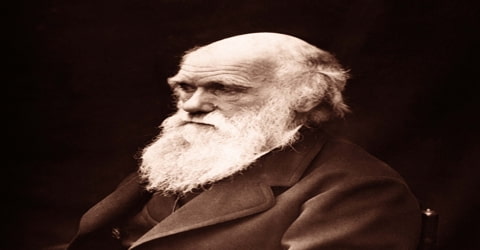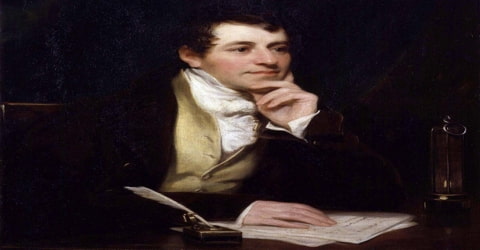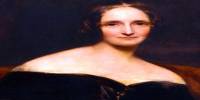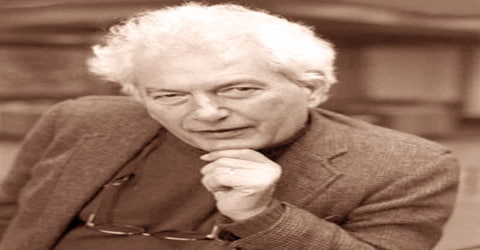Charles Darwin – An English naturalist, geologist, and biologist.
Name: Charles Darwin
Date of Birth: 12 February 1809
Place of Birth: The Mount, Shrewsbury, Shropshire, England
Date of Death: 19 April 1882 (aged 73)
Place of Death: Down House, Downe, Kent, England
Occupation: Naturalist, Geologist, and Biologist.
Spouse(s): Emma Wedgwood (m. 1839)
Children: William Erasmus Darwin, Anne Elizabeth Darwin, Mary Eleanor Darwin, Henrietta Emma “Etty” Darwin, George Howard Darwin, Elizabeth “Bessy” Darwin, Francis Darwin, Leonard Darwin, Horace Darwin, Charles Waring Darwin
Early Life
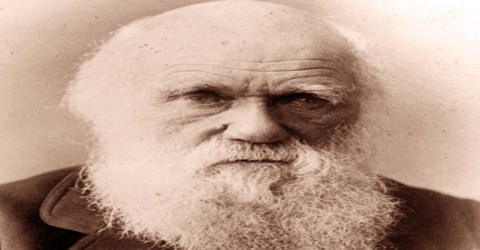
Charles Robert Darwin was born on 12 February 1809 in Shrewsbury, Shropshire. He was born into a wealthy and influential family. His grandfathers included – China manufacturer Josiah Wedgwood, and Erasmus Darwin, one of the leading intellectuals of 18th century England.
Darwin planned to study medicine at Edinburgh University, but later, at the instigation of his father, changed to studying Divinity at Christ’s College, Cambridge University. Darwin was not a great student, preferring to spend time in outdoor pursuits; he spent a lot of time examining natural science and beetle collecting. After gaining a passionate interest in natural science, Darwin was offered a place on the HMS Beagle to act as a natural scientist on a voyage to the coast of South America.
He was an English Natural scientist who laid down a framework for the theory of evolution – showing how Man evolved from lower life forms. Born in Shrewsbury, England, in 1831 he embarked on a five-year survey voyage around the world on the HMS Beagle; his studies of specimens led him to formulate his theories. In 1859, he published On the Origin of Species.
At the time, his research and publication led to bitter controversy, but his theory of evolution and natural selection later became accepted within the scientific community. Best known for his contributions to the science of evolution.
Darwin published his theory of evolution with compelling evidence in his 1859 book On the Origin of Species, overcoming scientific rejection of earlier concepts of transmutation of species. By the 1870s, the scientific community and a majority of the educated public had accepted evolution as a fact. However, many favored competing for explanations and it was not until the emergence of the modern evolutionary synthesis from the 1930s to the 1950s that a broad consensus developed in which natural selection was the basic mechanism of evolution. Darwin’s scientific discovery is the unifying theory of the life sciences, explaining the diversity of life.
Darwin was brought up in the Church of England, and at one point was being trained to be an Anglican priest. Like many of his generation, he took the Bible as the literal word of God and often quoted it as a source of moral authority. However, after his epic voyage to South America, he became doubtful of the Bible as a source of history; he also felt no reason why all religions couldn’t be true.
From 1849, he stopped going to church, though he never considered himself to be an atheist. He felt that ‘agnostic’ suited his beliefs more closely. He wrote in his autobiography that he eventually gave up Christianity as he disagreed with the conclusion that all non-believers spend eternity in hell.
He was writing up his theory in 1858 when Alfred Russel Wallace sent him an essay that described the same idea, prompting immediate joint publication of both of their theories.
In 1858, after years of scientific investigation, Darwin publically introduced his revolutionary theory of evolution in a letter read at a meeting of the Linnean Society. On November 24, 1859, he published a detailed explanation of his theory in his best-known work, On the Origin of Species by Means of Natural Selection.
Darwin’s work established evolutionary descent with modification as the dominant scientific explanation of diversification in nature. In 1871 he examined the human evolution and sexual selection in The Descent of Man, and Selection in Relation to Sex, followed by The Expression of the Emotions in Man and Animals (1872). His research on plants was published in a series of books, and in his final book, The Formation of Vegetable Mould, through the Actions of Worms (1881), he examined earthworms and their effect on soil.
Darwin has been described as one of the most influential figures in human history, and he was honored by burial in Westminster Abbey.
Childhood and Family Life

Charles Darwin was born on February 12, 1809, in the tiny merchant town of Shrewsbury, England. He was the fifth of six children of wealthy society doctor and financier Robert Darwin and Susannah Darwin (née Wedgwood). He was the grandson of two prominent abolitionists: Erasmus Darwin on his father’s side, and Josiah Wedgwood on his mother’s side.
Both families were largely Unitarian, though the Wedgwoods were adopting Anglicanism. Robert Darwin, himself quietly a freethinker, had baby Charles baptized in November 1809 in the Anglican St Chad’s Church, Shrewsbury, but Charles and his siblings attended the Unitarian chapel with their mother. The eight-year-old Charles already had a taste for natural history and collecting when he joined the day school run by its preacher in 1817. That July, his mother died. From September 1818, he joined his older brother Erasmus attending the nearby Anglican Shrewsbury School as a border.
In October 1825, at age 16, Darwin enrolled at Edinburgh University along with his brother Erasmus. Two years later, he became a student at Christ’s College in Cambridge. His father hoped he would follow in his footsteps and become a medical doctor, but the sight of blood made Darwin queasy.
Darwin had to stay at Cambridge until June 1831. He studied Paley’s Natural Theology or Evidences of the Existence and Attributes of the Deity (first published in 1802), which made an argument for divine design in nature, explaining adaptation as God acting through laws of nature. He read John Herschel’s new book, Preliminary Discourse on the Study of Natural Philosophy (1831), which described the highest aim of natural philosophy as understanding such laws through inductive reasoning based on observation, and Alexander von Humboldt’s Personal Narrative of scientific travels in 1799–1804. Inspired with “a burning zeal” to contribute, Darwin planned to visit Tenerife with some classmates after graduation to study natural history in the tropics. In preparation, he joined Adam Sedgwick’s geology course, then on 4 August traveled with him to spend fortnight mapping strata in Wales.
His father suggested he study to become a person instead, but Darwin was far more inclined to study natural history. After gaining a passionate interest in natural science, Darwin was offered a place on the HMS Beagle to act as a natural scientist on a voyage to the coast of South America.
Voyage on the HMS Beagle

While Darwin was at Christ’s College, botany professor John Stevens Henslow became his mentor. After Darwin graduated Christ’s College with a Bachelor of Arts degree in 1831, Henslow recommended him for a naturalist’s position aboard the HMS Beagle. The ship, commanded by Captain Robert FitzRoy, was to take a five-year survey trip around the world. The voyage would prove the opportunity of a lifetime for the budding young naturalist.
On December 27, 1831, the HMS Beagle launched its voyage around the world with Darwin in tow. Over the course of the trip, Darwin collected a variety of natural specimens, including birds, plants and fossils. Through hands-on research and experimentation, he had the unique opportunity to closely observe principles of botany, geology, and zoology. The Pacific Islands and Galapagos Archipelago were of particular interest to Darwin, as was South America.
On the voyage, Darwin made copious notes about specimens he found on his voyages. In particular, at the Galapagos Islands 500 miles west of South America, Darwin was struck by how the Finch was different on each individual island. He noticed that the Finch had somehow adapted to the various aspects of the particular island.
When the ship reached Falmouth, Cornwall, on 2 October 1836, Darwin was already a celebrity in scientific circles as in December 1835 Henslow had fostered his former pupil’s reputation by giving selected naturalists a pamphlet of Darwin’s geological letters. Darwin visited his home in Shrewsbury and saw relatives, then hurried to Cambridge to see Henslow, who advised him on finding naturalists available to catalog the collections and agreed to take on the botanical specimens. Darwin’s father organized investments, enabling his son to be a self-funded gentleman scientist, and an excited Darwin went around the London institutions being fêted and seeking experts to describe the collections. Zoologists had a huge backlog of work, and there was a danger of specimens just being left in storage.
Darwin’s Journal of Researches was published in 1839. With the help of a government grant to cover the cost of the illustrations, the Zoology of the Voyage of the Beagle was published in five volumes from 1839 to 1843. A number of scientists wrote articles on fossils (the preserved remains of creatures from an earlier age), living mammals, birds, fish, and reptiles. Darwin edited the work. He contributed information on the habits and ranges of the animals and made notes on the fossils. He also published The Structure and Distribution of Coral Reefs (1842), for he had studied the coral reefs in Cocos Islands during the Beagle voyage.
He began to develop a revolutionary theory about the origin of living beings that was contrary to the popular view of other naturalists at the time.
Personal Life
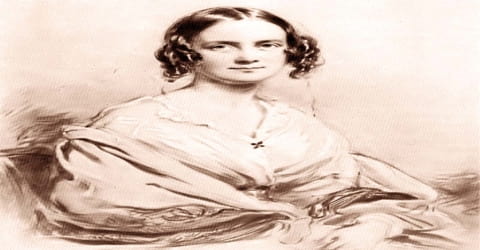
On 29 January, Darwin and Emma Wedgwood (his first cousin) were married at Maer in an Anglican ceremony arranged to suit the Unitarians, then immediately caught the train to London and their new home.
The Darwins had ten children: two died in infancy, and Annie’s death at the age of ten had a devastating effect on her parents. Charles was a devoted father and uncommonly attentive to his children. Whenever they fell ill, he feared that they might have inherited weaknesses from inbreeding due to the close family ties he shared with his wife and cousin, Emma Wedgwood. He examined this topic in his writings, contrasting it with the advantages of crossing amongst many organisms. Despite his fears, most of the surviving children and many of their descendants went on to have distinguished careers.
Of his surviving children, George, Francis, and Horace became Fellows of the Royal Society, distinguished as an astronomer, botanist, and civil engineer, respectively. All three were knighted. Another son, Leonard, went on to be a soldier, politician, economist, eugenicist, and mentor of the statistician and evolutionary biologist Ronald Fisher.
Works
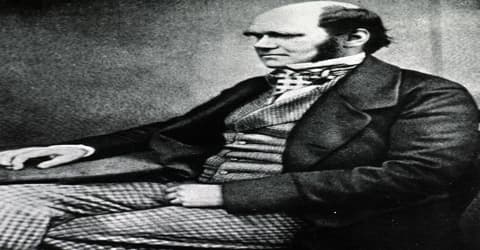
In 1842 and 1844 Darwin wrote short accounts of his views on evolution (change and improvement over time). However, the publication of other related works around the same time caused great controversy (dispute) and criticism of the authors, and Darwin decided the time was not yet right for him to enter the argument. He decided to wait and do more research. Darwin studied the practices of pigeon breeders, he conducted experiments on differences in plants and animals over time, and he worried about the problem of plant and animal transport across land and water barriers—for he believed in the importance of isolation for the creation of new species.
In May 1856 Lyell heard of Darwin’s ideas and urged him to write an account with full references. Darwin sent a chapter to Lyell and Sir Joseph Hooker, who were deeply impressed. In June 1858, when Darwin was halfway through his writing, he received an essay from another naturalist, Alfred Russel Wallace (1823–1913), containing the theory of evolution by natural selection—the same theory Darwin was working on. Lyell and Hooker arranged for a reading of a combined paper by Wallace and Darwin, and it was presented at a meeting of the Linnaean Society in London, England, on July 1. The paper had little effect.
On the Origin of Species proved unexpectedly popular, with the entire stock of 1,250 copies oversubscribed when it went on sale to booksellers on 22 November 1859. In the book, Darwin set out “one long argument” of detailed observations, inferences, and consideration of anticipated objections. In making the case for common descent, he included evidence of homologies between humans and other mammals. Having outlined sexual selection, he hinted that it could explain differences between human races. He avoided explicit discussion of human origins, but implied the significance of his work with the sentence; “Light will be thrown on the origin of man and his history.”
In On the Various Contrivances by Which British and Foreign Orchids Are Fertilised by Insects (1862), Darwin showed how the survival of an organism may be dependent on seemingly unimportant qualities. It became hard to say what is “useless” in nature. The Variation of Animals and Plants under Domestication (1868), he expanded on a topic he had introduced in Origin. The Descent of Man and Selection in Relation to Sex (1871) Darwin caused another uproar by suggesting that humans and apes both could be traced to a common ancestor.
Darwin became increasingly interested in plants, especially since he had his son Francis to help with the work. Papers Darwin had published in 1864 were collected into The Movements and Habits of Climbing Plants (1875), and these ideas were further explained and published as The Power of Movement in Plants (1880). Darwin’s last work returned to observations he had made in 1837: The Formation of Vegetable Mould through the Action of Worms, with Observations on Their Habits (1881).
Death and Legacy
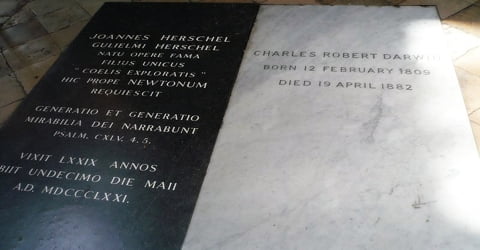
Following a lifetime of devout research, Charles Darwin died at his family home, Down House, in London, on April 19, 1882. He was buried at Westminster Abbey.
His last words were to his family, telling Emma “I am not the least afraid of death – Remember what a good wife you have been to me – Tell all my children to remember how good they have been to me”, then while she rested, he repeatedly told Henrietta and Francis “It’s almost worthwhile to be sick to be nursed by you”.
He had expected to be buried in St Mary’s churchyard at Downe, but at the request of Darwin’s colleagues, after public and parliamentary petitioning, William Spottiswoode (President of the Royal Society) arranged for Darwin to be honored by burial in Westminster Abbey, close to John Herschel and Isaac Newton. The funeral was held on Wednesday 26 April and was attended by thousands of people, including family, friends, scientists, philosophers, and dignitaries
In June 1909, though few at that time agreed with his view that “natural selection has been the main but not the exclusive means of modification”, he was honoured by more than 400 officials and scientists from across the world who met in Cambridge to commemorate his centenary and the fiftieth anniversary of On the Origin of Species. Around the beginning of the 20th century, a period that has been called “the eclipse of Darwinism”, scientists proposed various alternative evolutionary mechanisms, which eventually proved untenable.

More than a century later, Yale ornithologist Richard Brum sought to revive Darwin’s lesser-known theory on sexual selection in The Evolution of Beauty. While Darwin’s original attempts to cite female aesthetic mating choices as a driving force of evolution was criticized, Brum delivered an effective argument via his expertise in birds, earning selection to The New York Times’ list of 10 best books of 2017.
Darwin’s fame and popularity led to his name being associated with ideas and movements that, at times, had only an indirect relation to his writings, and sometimes went directly against his express comments. The term “Social Darwinism” was used infrequently from around the 1890s but became popular as a derogatory term in the 1940s when used by Richard Hofstadter to attack the laissez-faire conservatism of those like William Graham Sumner who opposed reform and socialism. Since then, it has been used as a term of abuse by those opposed to what they think are the moral consequences of evolution.
Information Source:
